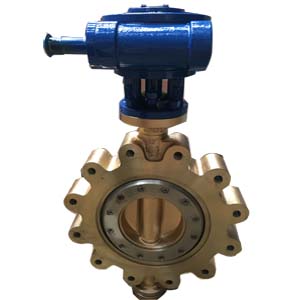Pressure test methods for various kinds of valves (part two)
Posted: 01/03/2019 15:38:51 Hits: 38
Pressure test methods for butterfly valves
The strength test of the pneumatic butterfly valve is the same as that of the globe valve. During the sealing performance test of the butterfly valve, the test medium should be imported from the end of the flow. The disc should be opened while the other end closed, and the injection pressure needs to meet the specified value. After checking the packing and other seals to ensure there is no leakage, close the disc and open the other end to check the seal of the disc. No leakage at the plate seal is acceptable. The sealing performance test for butterfly valves used for regulating the flow rate may not be performed.
Pressure test methods for diaphragm valves
In diaphragm valve strength test, the medium can be imported from either end. Open the valve disc, and close the other end. After the test pressure rises to the specified value, the valve body and the valve cover are qualified if there is no leakage. Then, reduce the pressure to the sealing test pressure, turn off the valve disc, and open the other end for inspection, no leakage is acceptable.
Pressure test methods for check valves
The axis of lift check valve disc should be in a position perpendicular to the horizontal line while that of the swing check valve passage and that of the disc should be in a position approximately parallel to the horizontal line. In the strength test, the test medium should be imported from the inlet end to the specified value while the other end is closed, and the valve body and the valve cover are qualified if there is no leakage. For the sealing test, the medium should be imported from the outlet end. At the inlet end, the sealing surface is qualified if there is no leakage at the packing and gasket.
Pressure test methods for safety valves
The strength test of the safety valve is the same as other valves and is tested with water. When testing the lower part of the valve body, the pressure is imported from the inlet end, and the sealing surface is closed. When the upper part of the valve body and the bonnet are tested, the pressure is imported from the outlet end while the other ends are closed. The valve body and the valve cover are qualified if they have no leakage during the prescribed time.
The media generally used for sealing test and constant pressure test: saturated steam for safety valves used for steam; air for valves used for ammonia or other gases; water for valves used for water and other non-corrosive liquid. For safety valves used in some important positions, nitrogen is commonly used as the test medium.
The frequency of sealing tests that are carried out with the nominal pressure value as the test pressure should not be less than two, and the tested valve is qualified if there is no leakage within the prescribed time. There are two methods for leak detection: one is to seal the joints of the safety valve, and paste a piece of thin paper on the outlet flange with butter. The paper bulges if there is leakage, and the valve is qualified if the paper does not bulge; The second method is to paste a plastic plate or other kinds of plates on the lower part of the outlet flange, and the valve disc is filled with water to check that if there is no bubble. The number of times of the safety valve constant pressure and return pressure tests should be not less than 3 times, and the valve is qualified according to the regulations.

